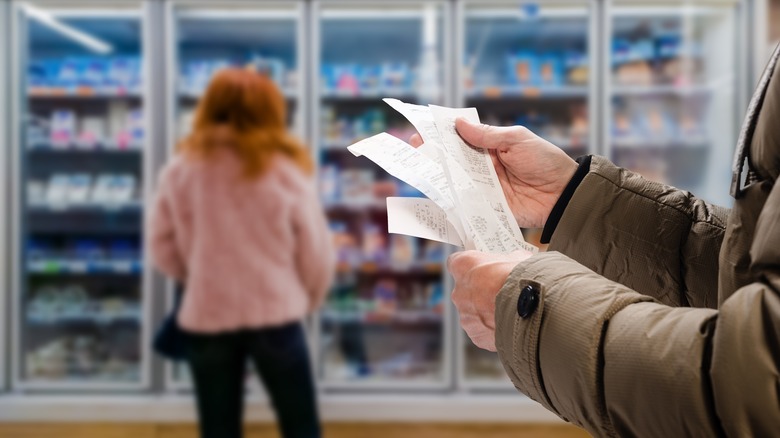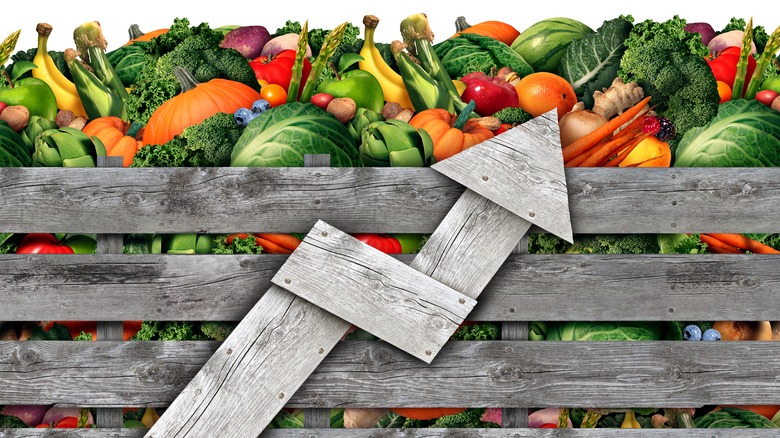Why Food Prices Will Remain High Even As Inflation Slows
Consumers feeling hopeful about potential decreases to food prices in the midst of the current inflation may not want to put all their very expensive eggs in one basket just yet. USA Today explains that while prices on some goods and services are slowly decreasing, sticker shock at the grocery store shows no sign of letting up for multiple reasons.
According to U.S. News, prices of certain goods saw a decline in May 2022 as consumers decreased spending on pandemic splurges like furniture, televisions, and sporting goods. While this decrease in spending indicates a slowing economy resulting from the Federal Reserve's recent price hike, it does not consider inflated prices on food and gas. Fluctuating costs on food and gas are often not factored into core inflation numbers; the Fed considers them to be too erratic due to uncontrollable outside influences like the War in Ukraine keeping food prices high. While core inflation in April was slightly lower than that of last year, food prices still rose by 1.2% in May (per U.S. News). Unfulfilled demand for food products caused by supply chain issues and high gas prices continue to keep prices at the grocery store high, and there is little hope that they will be decreasing anytime soon.
Several factors continue to affect the cost of food
Multiple factors contribute to food cost confusion as consumers see glimmers of easing inflation for certain commodities but can't get relief at the grocery store. Shoppers might need to get comfortable with the high cost of food, as USA Today suggests that once prices on certain goods reach a high threshold, they tend to stay there.
Inflation remains at a 40-year high of 8.6% as of May, meaning that even a slight decrease still leaves consumers grappling with higher prices than they've seen in decades. Although the Federal Reserve has seen a small but promising economic slow-down after its interest rate hike, that doesn't account for food and energy costs that are still in high demand. As businesses continue to struggle with supply chain issues, they will continue to pass those inflated costs on to their customers. Experts predict that higher costs at the grocery store checkout will continue until wages can catch up to inflated prices, but that they still have a long way to go. The Bureau of Labor Statistics reported a 3.9% decrease in real wages compared to last May, indicating an unbalanced economy that will be slow to recover.

